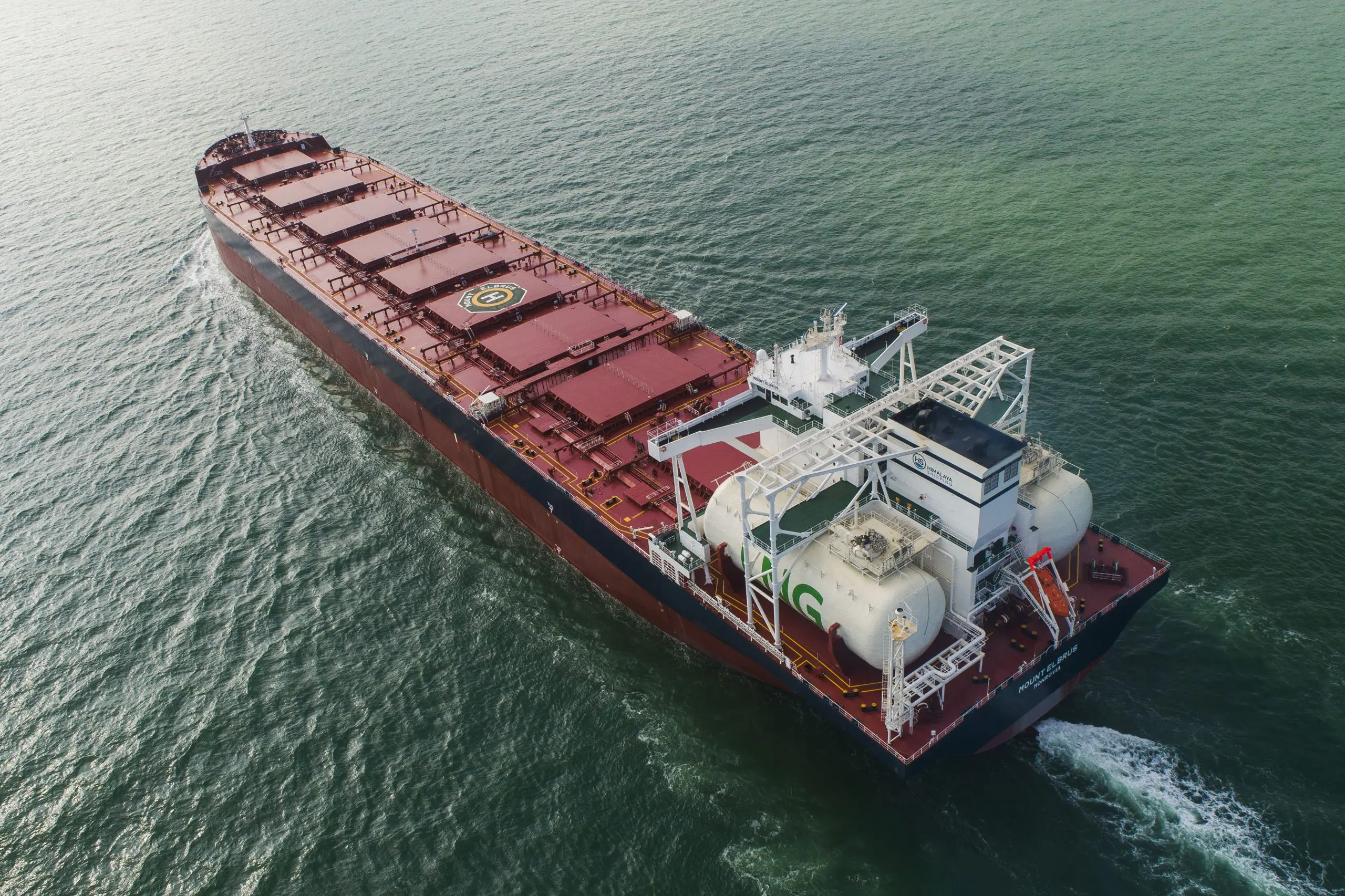China’s New Times has delivered Himalaya Shipping’s eleventh of twelve LNG-powered Newcastlemax bulk carriers.
Himalaya announced the delivery of the 210,000-dwt LNG dual-fuel bulk carrier, Mount Aconcagua, in its commercial update on Friday.
The last LNG-powered bulker, Mount Emai, is scheduled to be delivered later this month, Tor Olav Trøim’s Himalaya said.
Prior to this vessel, Himalaya took delivery of Mount Denali in April.
Charter with Japanese shipping firm
Himalaya said Mount Aconcagua will be delivered to a major Japanese shipping company.
The ship will start a 22 to 26 months’ time charter, plus an option exercisable by the counterparty for a further 11 to 13 months, and will earn an index-linked rate, reflecting a significant premium to a standard Capesize vessel, according to Himalaya.
The time charter also includes a profit sharing of any economic benefit derived from operating the vessel´s scrubber or running on LNG, as well as certain rights to convert the time charter to fixed rate based on the prevailing forward freight agreement (FFA) curve from time to time.
Himalaya’s LNG bulkers earned about $35,700 per day in May
Himalaya achieved average time charter equivalent earnings of about $35,700 per day in May.
The shipping firm said that the average time charter rate includes average daily scrubber and LNG benefits on nine vessels of about $2,600 per day.
Himalaya noted that its six vessels trading on fixed time charters earned about $35,800 per day, gross, including average daily scrubber and LNG benefits on five vessels.
The company’s four vessels trading on index-linked time charters earned about $35,700 per day, gross, including average daily scrubber and LNG benefits.
The Baltic 5TC Capesize Index averaged $23,424 during May.
In April, Himalaya achieved average time charter equivalent earnings of about $32,100 per day.
Heading into the third quarter, the company will have one vessel on a fixed rate until March 2025 and one of its index-linked time charters converted to a fixed rate of $40,810 plus scrubber benefit until December 31, 2024.
“It is the expectation of the company that with the delivery of our last ship later in June and if market conditions continue to improve, the company should benefit from increased cash flow, and with no further investment plans, it is the intention of the company to return excess cashflow to shareholders through increasing dividends,” CEO Herman Billung said.

